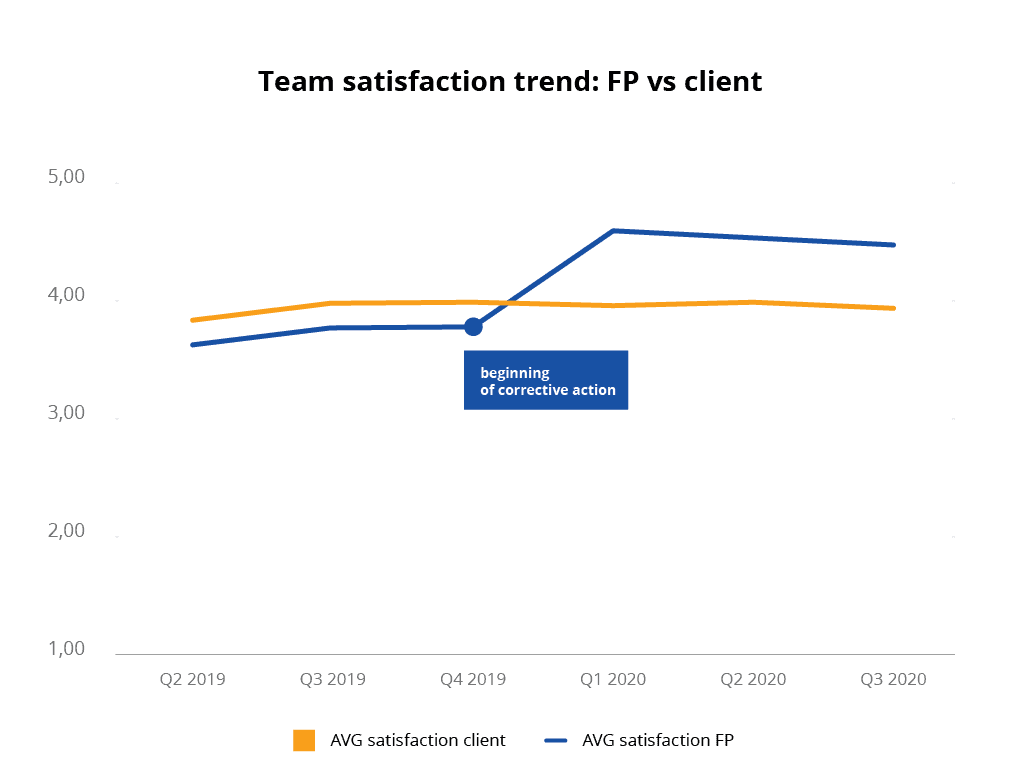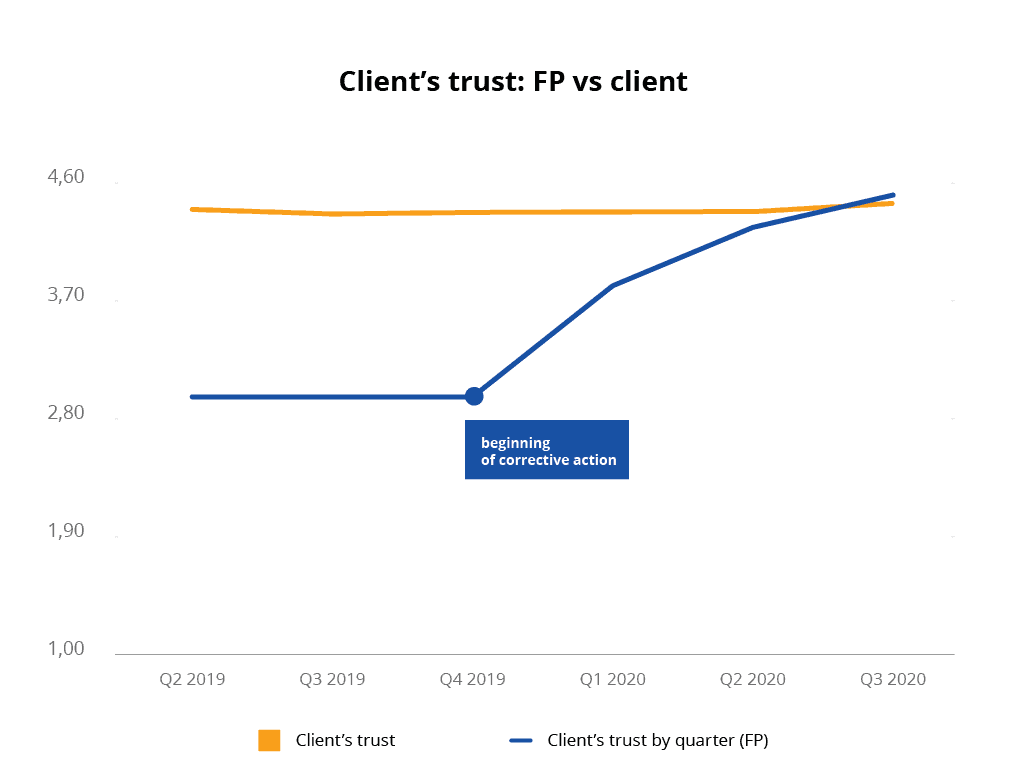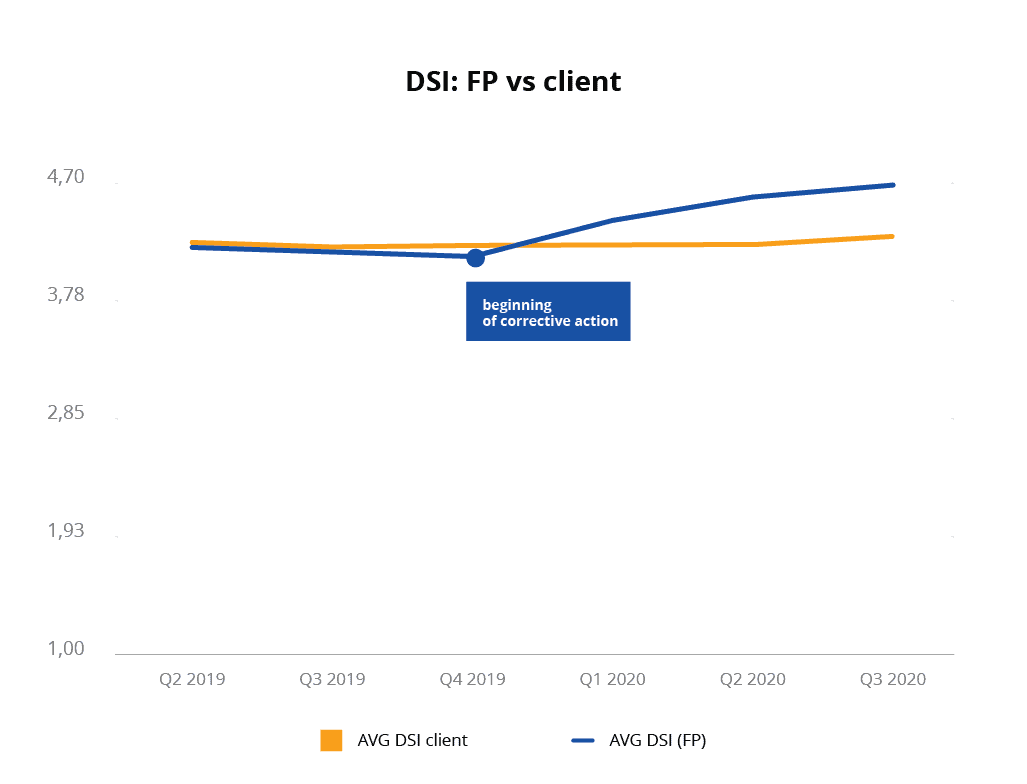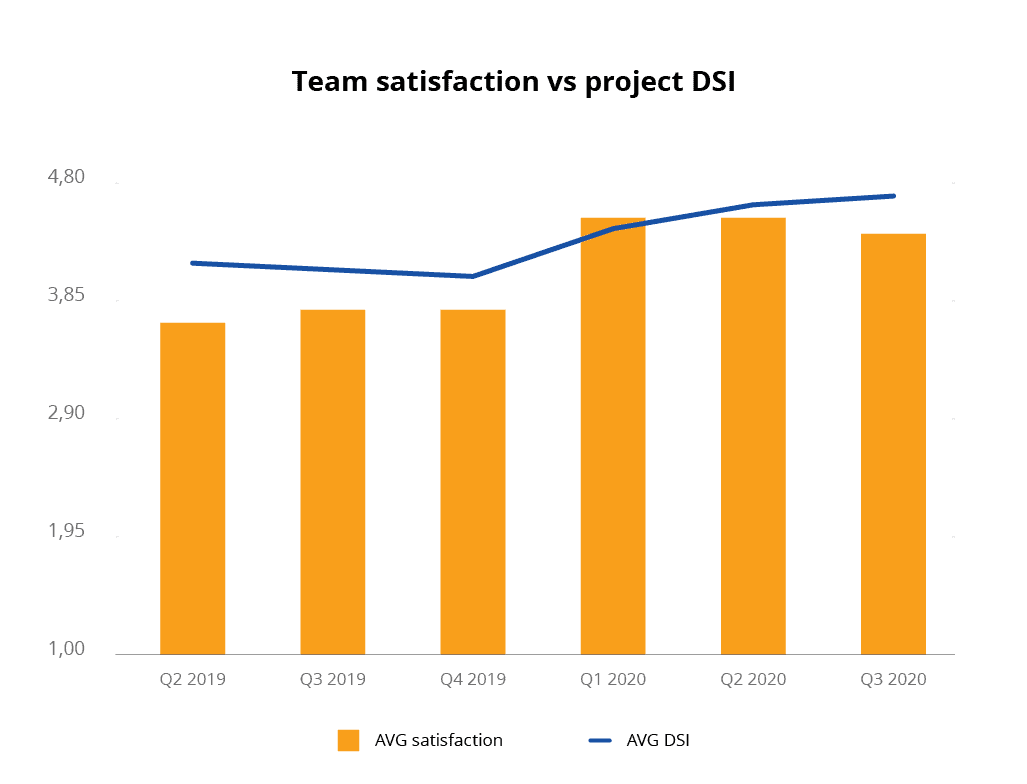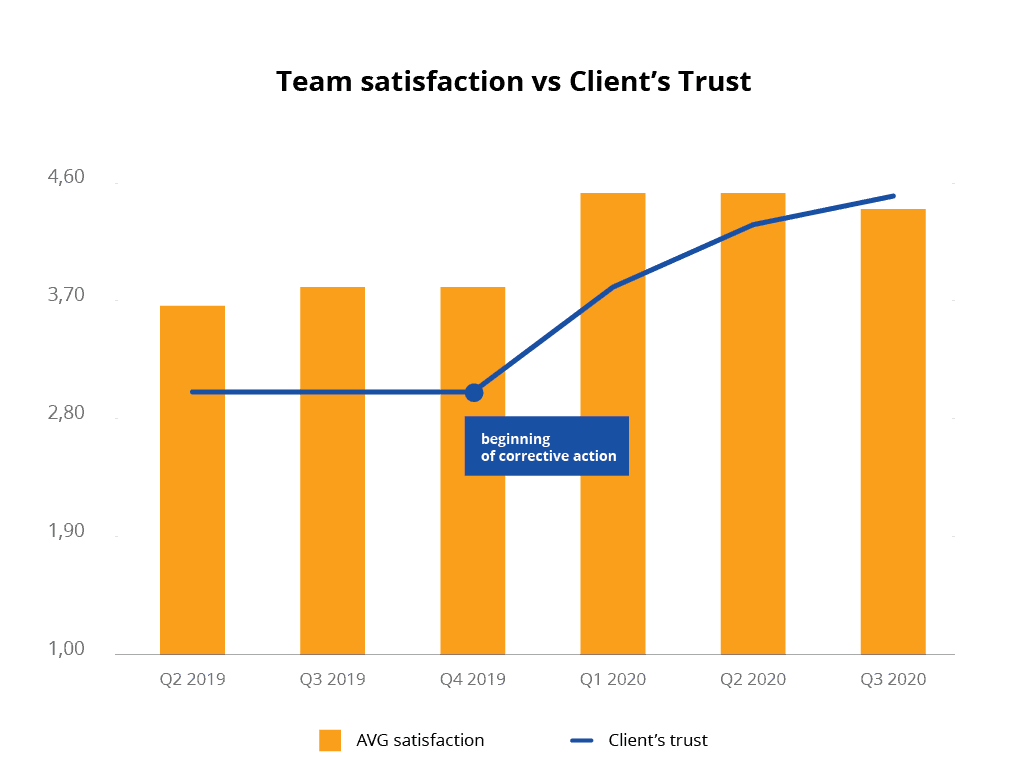
How to increase team’s motivation and make better results – case study
An unsatisfied team might perform below expectation just as a highly motivated team can reach for the stars. This may sound like a cliché but people often seem to underestimate this simple fact while running an IT project.
However, it’s not only about problems with meeting deadlines or low quality coding. In reality, it’s also about client satisfaction and the company’s reliability.
And these are not just empty words – we have a specific case to help prove our point. Take a look below and see how we managed to boost morale for our team and how this influenced our cooperation with the client – in a very positive way!
A case study
While running a particular project for one of our clients, we were struggling with some difficulties that were pretty hard to overcome.
The situation escalated pretty quickly, and we soon found that our credibility has been undermined.
Internal difficulties
- Demotivated team – team members began to lose their proactivity, motivation and had less interest in looking for optimal solutions and 3 out of 4 team members actually considered leaving the team. Had they left, the project would have been in serious jeopardy, since replacing them would have required building a whole new team.
- No team-spirit – the situation led to worse cooperation between individual team members.
External difficulties
- Dissatisfied client – the client started to have doubts about the quality of delivery.
- Decreased trust – the client began to see us as a contractor, not as a partner.
It was like a vicious circle – the client’s lower trust resulted in the less motivated team and the team’s decreased motivation badly influenced the client’s trust… we knew we had to do something about it!
Solutions
Being aware of these problems, we decided to take some serious measures and try to solve them. So, to enable the fresh start of the project we decided to replace the Team Leader (TL) and the Engagement Manager (EM) and right after this change, the real trust-building process began – for both the team and the client.
The team
1) The new TL started discussing problems with team members individually and introduced a new division of responsibilities. They discussed the project and talked about their personal needs and goals.
2) He offered the team training packages and mentorship possibilities, opening up some new and appealing paths of development.
3) The TL started monitoring individual motivation levels.
4) The TL bet on a problem-solving approach and reacted quickly to any emerging issues.
5) In addition: prior to replacing the TL and EM, we also moved the team to a different workspace, so that they could have a fresh start.
The client
1) Approximately three months after replacing the Team Leader, we met with the client. We presented the team’s perspectives, and the client clearly defined their expectations and requirements.
2) We began to cooperate even more closely with the client’s Product Manager.
Effects
As a result of all of these actions, we received a new set of responsibilities from that client, along with 3 new and promising sub-projects to work on that involved leveraging some top emerging technologies. The client’s satisfaction and trust increased significantly.
We also noticed higher scores when it came to Delivery Success Indicators.
Internally, we observed:
- higher motivation and satisfaction among our team members that reflected in better scores in internal surveys;
- faster, more productive work and an increase in the number of features released on time.
Also, we discovered some interesting interdependencies between the motivation of the team, our KPIs and the client’s satisfaction levels… just take a look at the charts below:
Higher team satisfaction resulted in a surge in Delivery Success Indicators for the project, increased trust from the client and a greater percentage of sprints delivered on time… and it is a pretty important Key Performance Indicator.
Lessons learnt
This entire experience taught us a lot. We are pretty sure that you can benefit from these lessons as well, so that you can start to manage your team’s motivation levels from the very beginning. Here are the lessons learnt:
- Don’t underestimate the importance of your Team Leaders and Engagement Managers in a project.
- Take care of each individual team member – emphasise increasing and then maintaining high levels of satisfaction.
- Bear in mind that the team’s level of satisfaction directly influences any partnership or cooperation and can certainly impact its future, in either a positive or negative way.
This is why you need to be vigilant and react quickly whenever you notice that your team motivation is not as high as it ought to be.
We put our hearts into each and every project we develop for our clients. High quality delivery and trustworthy partnerships are two out of five fillars of The Future Processing Way. This unique approach helps us build long-lasting partnerships and create amazing software solutions that satisfy business’ and users’ needs.
